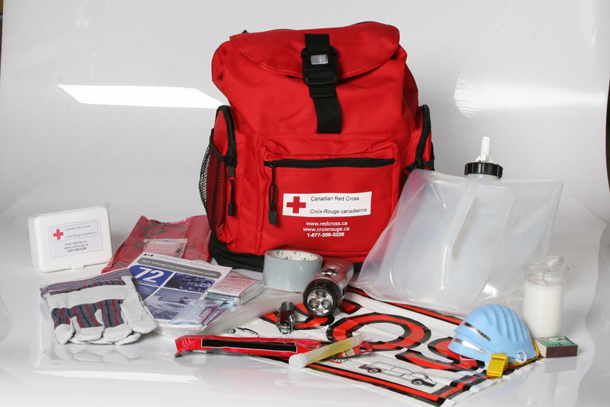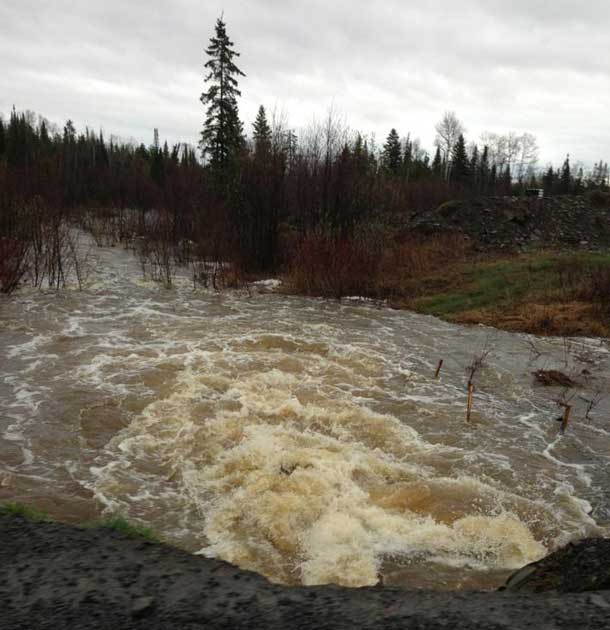
THUNDER BAY – News – It is Emergency Preparedness Week across Canada. The Canadian Red Cross is one of the frontline organizations that helps Canadians when serious incidents happen in their communities. Being everywhere from Attawapiskat for community crisis situations, to the East End of Thunder Bay during the June 2012 Flood, the Red Cross is an important part of disaster management.
Following an unusually high number of disasters which the Canadian Red Cross responded to in 2013, Canadians are being urged to take steps to be ready for the unexpected. The Red Cross is sounding the alarm on the need for personal preparedness as part of Emergency Preparedness Week – a week-long advocacy initiative spearheaded by Public Safety Canada.
“This past year was extremely difficult with significant disasters happening across the country,” said Conrad Sauvé, secretary general and CEO of the Canadian Red Cross. “These events remind us that disasters can touch all of us regardless of the community we live in, and that we must take steps to prepare ourselves.”
In 2013, the Canadian Red Cross helped nearly 90,000 people in response to 2,700 emergencies – that’s an average of more than seven emergencies every day. More than four times as many people received assistance from the Red Cross in 2013 compared with 2012. It’s also twice as many compared with 2011, when several large disasters including the Slave Lake wildfires occurred.
While some disasters are accidental or man-made, many of last year’s emergencies were caused by severe weather. Environment Canada’s senior climatologist David Phillips is especially concerned about the changing nature of weather extremes in Canada.
“2013 was a tremendously active and difficult year for disasters across Canada,” Phillips said. “It featured some of the most expensive, disruptive and catastrophic weather in our nation’s history. At times, the weather systems seemed relentless, unstoppable, widespread and more powerful. There are indications that seemingly greater extremes are not one-offs, bad luck or cyclical but more a trend. Extreme weather years are becoming the norm; quiet years the rarity.”

In Canada, the Red Cross responded to several significant emergencies caused by weather, including the Alberta floods and the Ontario ice storm. In Alberta, the Red Cross is still supporting some of the 55,000 people who were affected by the flooding last June and in need of Red Cross services. Many communities in Eastern Canada were also affected by the December ice storm. In Ontario alone, the Red Cross set up 30 shelters in 15 different communities assisting approximately 4,600 people, most of who were in the City of Toronto.
Other emergencies included the train derailment in Lac-Mégantic, following which the Red Cross supported 2,400 people. In other parts of the country, the Red Cross helped families and individuals affected by a range of emergencies including house fires, floods, loss of electricity for more than 72 hours, evacuations and severe storms.
Despite these emergencies, many Canadians don’t believe a disaster will happen in their community. A 2012 poll, completed by Ipsos on behalf of the Canadian Red Cross, found 66 per cent of respondents had not taken steps to prepare for a disaster; the main reason cited is the perceived rarity of a disaster occurring in their area.
The Red Cross and David Phillips remind Canadians they are not immune from disasters that seem commonplace in other parts of the world. “We can’t prevent weather hazards,” Phillips said. “All the wishing and praying you do won’t stop that coming storm. And crossing your fingers and hoping nothing bad will happen is unrealistic. A better plan is to anticipate the hazard and reduce the risk ahead of the event, and if it does occur, being prepared to protect ourselves and our families. Readiness can prevent hazards from becoming disasters.”
The Red Cross believes that individuals and families must take responsibility for their own safety and well-being. “When thousands are impacted by a disaster situation, resources can be overwhelmed and residents cannot expect a response within hours – it could be days,” said Sauvé. “That is why it is critical for individuals and families to take steps to prepare themselves for a minimum of 72 hours in a disaster.”
There are three simple steps Canadians can take to help prepare themselves and their families:
1 Know the risks in their community
2 Have a plan so that each family member knows what to do in an emergency
3 Get an emergency preparedness kit with enough supplies for each family member, including: non-perishable food, water, a manual can opener, flashlights and radios, cash in small bills, and special needs items like diapers or medications.
For more information, visit www.redcross.ca/ready. Canadians can also learn more about emergency kits by using the Canadian Red Cross Preparedness Calculator on Facebook






